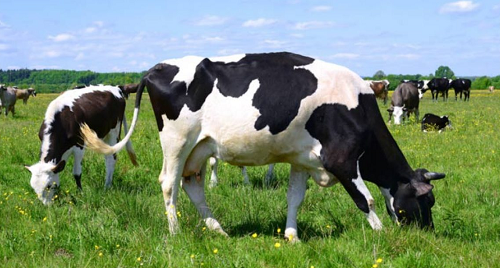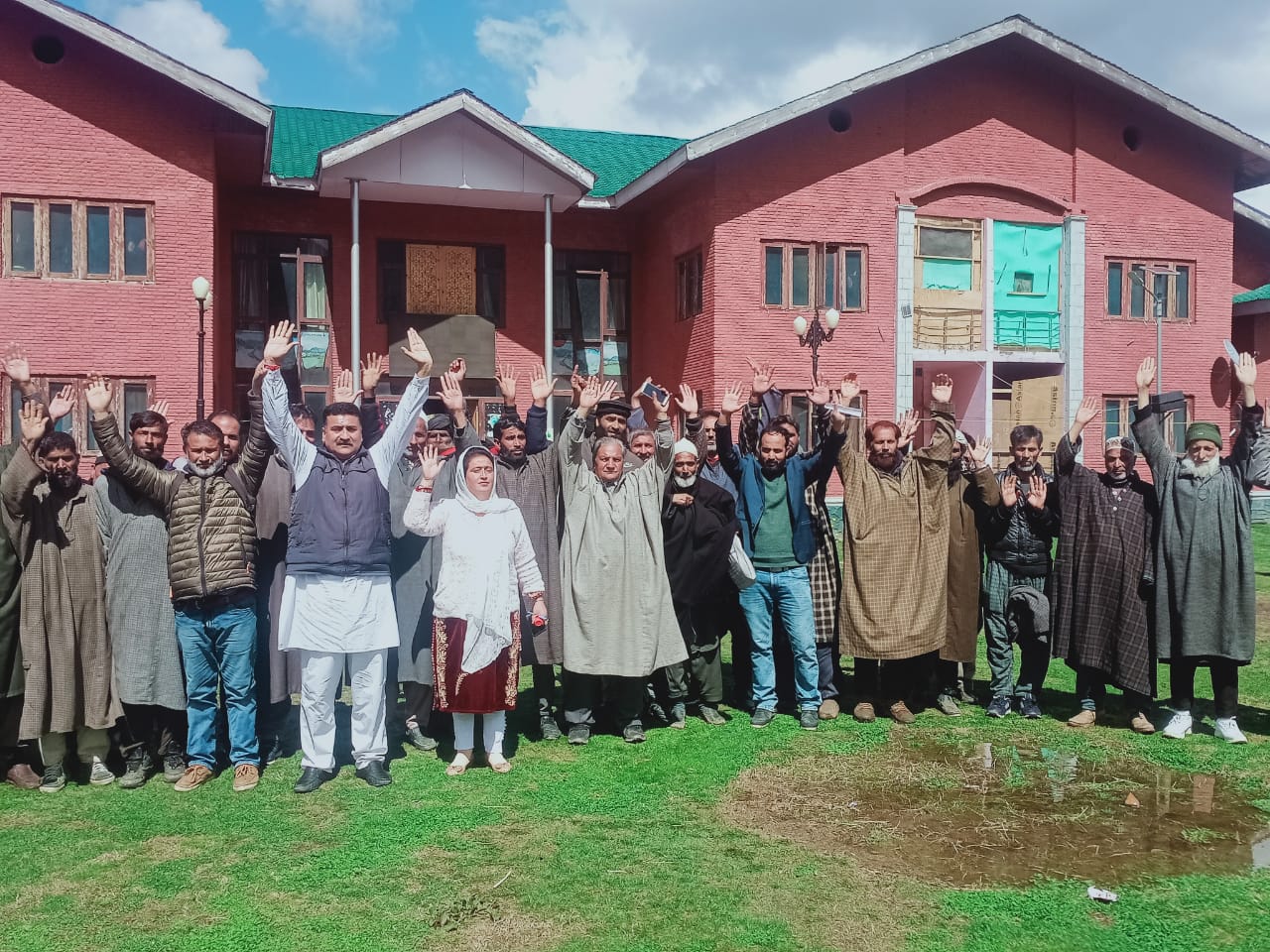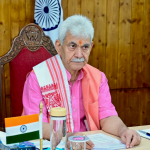SYED M SHAH AAFTAB & PARVAIZ AHMED RESHI
Being at the mercy of Holy trinity of climate, food plants and animals for sustenance and thriving, humans, since the advent of their intellect, have evolved a holy grail of symbiotic association for mutual co-existence wherein humans ultimately domesticated livestock, cultured agri-production (agriculture) and worshipped nature and the factors which defined the climate vis-à-vis sun, rain, water, wind, moon, etc. The association with agriculture and livestock remained such a close-knit that humans, while progressing from their nomadic life to post-industrial era, have retained the critical reliance on agriculture and animals for food, nutritional and livelihood security. Animals and plants kept on evolving, in their natural tracts and humans continued their consumption not only in their natural habitats but even continents away, thereby helping in their dispersal and colonization of the globe.
The natural presence of livestock as well as plants in their original tracts and dissemination by humane agency resulted, in due course of time, in development of the source and sink areas. This necessitated the development of special facilities and arena for transportation-from regulation-to- relegation, leading to development of commercialization of animals and plants as well as their products. In the current global scenario, development of commercialization methodologies assumes the significance synonymous with survival-survival of both the producers as well as the consumers, leading finally to indiscriminate market expansion and exploitation (by the thriving middlemen) which adversely affected both the parties, thus again challenging the human intelligence and forbearance to devise a holistic win-win strategy for both the producers and consumers as well as the service class.
Milk- A special Case
Livestock products, especially milk needs a special mention here considering its short shelf-life and consistent need/demand and limitations of production in the rural and country side. The scenario has not been different in our country where the production and final availability of milk shows no linear correlation, leading to wastage of the product in one area and shortage, sometimes acute, in the other. The UT of J&K is replete with the similar where quite often milk gets wasted/destroyed in source areas (rural valley), while the sink areas (urban valley) remain in continuous want of quality milk and probably never attain it.
It is in the context of this extant scenario that a roadmap is to be envisaged for commercialization of this vital animal product so that it reaches, in ample quantity and safe quality, to the end consumer and the producer, at the same time harnesses the profit that is due to him/her. This creates a compelling scenario for all the stakeholders, be it developmental departments, agricultural universities and/or Govt. agencies to devise and frame/legislate the policy for commercialization of milk with the intention that the producer/farmer reaps an optimum benefit; the consumer gets better than what he pays for; and the sensitive ecosystem maintains its ambience and natural endowment by advocating optimal use of natural resources for consistent production, while desisting overuse of natural resources to increase short-term production which is unfortunately the current practice among the farmers, especially the organized ones.
The most important factors that would propel and sustain the interventions for transition from conventional to commercial dairying are:
- Milk is the single largest agricultural commodity in terms of the value of the commodity produced in the country. The value of milk output has already surpassed the total value of output from food grains.
- Livestock holding in general and milch animal holding in particular is far more equitable than land holding. In India, about 86% of the total farmers are small and marginal who together own about 47.34% of the farm land only, as against 75.24% of milch animals (Basic Animal husbandry Statistics, DAHD, 2019-20).
- Round the year employment generation and income gain by dairying (commercial) as against the seasonal providence from agriculture.
- Inclusive development and upliftment of women in the country, because 70-80% of people involved with animals and dairying comprise of women (rural or peri-urban).
- Significant contribution and share in farmers income, with about 67% of income from “farming of animals” being attributed to income from dairying (milk) (NSSO, 2012-13).
- Comparative increasing share of income, owing to the fact that during 2003-2013, the share of income from “farming of animals” increased from 4.3% to 12%, while the share from both non-farm business and wages and salaries declined over this period, indicating that any intervention (transition from conventional to commercial) in dairying would contribute towards poverty alleviation and improvement in farmers income. Interventions in Dairying have the potential to rapidly effect the doubling of farmers’ income.
At the heart of the roadmap should be the prime objective of transitioning from a multi-objective farm-household activity to a focussed-objective enterprise activity.
Structure of Indian Dairy Industry
Dairy Farm sector in the country is highly fragmented and small-scale farmers who own only two cattle, constitute 97% of the total dairy farmers in India. Even though, the numbers of large dairy farmers who own hundred or more cattle are less in the country, they out-perform small and medium farmers in terms of productivity/yield and representation in policy making. Organized Indian dairy industry is characterised by the large number of POIs (Producers Owned Institutions) which dwarf any other business model such as private firms or multinational companies. POIs in Indian dairy sector comprises mostly of Dairy cooperative societies and producer companies. There are more than 200 Producer Companies and about 1.85 lakh dairy cooperative societies spread across the country. These Primary producers’ organisations work towards protecting small farmers from ill-effects of globalization, making them participate successfully in the modern competitive markets.
Medium sized dairy farms from 50 to 200 cattle are increasing in some of the major dairy states such as Punjab, Gujarat, Maharashtra and Andhra Pradesh. Major competitors in the Dairy Food products market in the India are Amul, Mother Dairy (POI) Parag and Hatsun Agro (private companies) (Research and Markets, Business Wire, 2015). Other major players amongst the private companies and producer owned institutions are Heritage Foods Ltd., Kwality Ltd., Prabhat Dairy Ltd., Karnataka Cooperative Milk Producers Federation Ltd., Tamil Nadu Cooperative Milk Producers Federation Ltd. and Andhra Pradesh Dairy Development Cooperative Federation Ltd, etc. The increasing market share is due the growth in the demand of the valued-added dairy products like cheese and butter. As per various rating agencies, the revenue growth in the value-added product category (VAP) is growing at 14-15 percent annually which is 50 percent faster than the overall dairy sector’s growth rate.
Dairy sector scenario in Kashmir Valley
Livestock sector contributes 5.62% to the GDP of J&K and 31% to the GDP contribution of Agriculture and allied sectors including forestry. The major contribution of livestock sector is from dairy industry and around 25.94 Lakh MT milk is produced in J&K annually which amounts to a turnover of Rs. 9080 Cr. However, the growth rate recorded in the dairy sector is 3.5% as against the country’s average of 5.8%. The UT is considerably lacking behind in dairy processing sector wherein only 2.8% of the total milk produced is marketed through organized processing sector against the country’s average of 34%.The bulk of the produce with no amicable market further lowers its market price and hence renders the farmers amenable to exploitation by the middlemen and local private dairy processing units who sell the pasteurized/preserved milk at exorbitant prices, often with compromised quality.
This creates a paradoxical and ironic solution wherein milk availability in the market to an end consumer is ensured but milk procurement from the primary producer is not, where the primary producer longs that his/her milk be purchased but the end consumer readily buys it from the market, where milk of compromised quality fetches the consumers but that of optimum quality gets wasted, where value-added dairy products are available not from the local milk but from imported skim milk powder, while the huge excess of milk is lost to spoilage for want of conversion into the daily products, where quality and pure milk is available at throwaway prices in the source pockets while the sink areas (urban dwellings) consume low quality milk at higher the prices.
The scenario, a serious blow to the much-hyped White revolution in valley, demands for transition from subsistence approach (conventional dairying) to market-oriented specialized systems (commercial dairying) so that a sustainable dairy ecosystem and a win-win situation for both the primary producer and the end consumer is created. The transition process has to gain momentum and develop economically and ecologically sustainable model (s) in a short span of time so that the producers do not lose their interest in the sector which might have adverse impact in this ecologically sensitive Himalayan region.
Unlike other developing countries where the policies for transition from subsistence farming systems into market-oriented systems are associated with specialization and intensification of farming systems as well as increased use of resources such as biomass, land and water, which consequently lead to overexploitation of natural resources and social issues like farmer’s dependency on external inputs and marginalization of communities, the scenario in the valley is entirely different for it demands not overexploitation of the resources for additional production but assimilation of the techniques for optimum utilization of the available produce which if collected, processed and/or converted properly would assure not only self-sufficiency but excess availability and wealth gain. The current per capita availability of milk (507g/day) though being significantly higher than the national average (406g/day) is not realized by the whole population of the valley, primarily due to lack of appropriate commercialization module which would ensure daily collection from the source areas (at a regulated and appropriate price), processing, preservation, and conversion to value-added products for the end-consumer (at an optimum price and quality).
Dairy Value Chain- The Way Forward
Dairying, as an occupation is subsidiary to agriculture and an important source of livelihood for small and marginal farmers as well as to landless labourers. With the implementation of the prestigious flag-ship schemes like Rashtriya Gokul Mission, Integrated Dairy Development Scheme (IDDS), Feed and Fodder development Scheme (F&FDS), Animal Husbandry Infrastructure Development Fund, establishment of Cluster model milk villages under Tribal sub plan, etc., dairying has created a demand for development of a commercial module to combat the extant ill-organised and primitive marketing scenario. Milk distribution system is extensively traditional and exploitative with organized sector handling a little portion. This demands for development of region-specific commercialization strategies for milk and other dairy based value-added products which would limit/end the wastage of the produce at producer level as well as ensure availability of the product to end consumer in a manner symbiotic and holistic to human-animal-environment interrelation.
Augmentation and integration of dairying with processing and value-addition is perceived to have ample scope and could boost milk production and increase income and employment. The organized milk procurement, processing and marketing would help farmers to earn remunerative prices and enhance their quality of life, while providing for better socio-economic and nutritional stability of both the producers as well as consumers. The only way forward is development of strong and commercially viable dairy value-chain, where facilities and infrastructure for milk procurement, processing, marketing, cold storage facilities and quality control, etc. are created, upgraded and intensified.
The efforts and policies for development of organized dairy enterprise and its easy accessibility to dairy farmers as well as participation of cooperatives, private sector and producer companies is the need of the hour. The institutional support, aimed at provision of appropriate technologies for increased dairy production, processing of the produce, feeding, breeding and scientific management of the animals, training and capacity building of all the stakeholders, health-care and veterinary services, is essential for achieving the purpose. In sum, commercial dairy development should contribute to three goals viz.,
- Healthy food, especially for the first 1000 days and thereafter.
- Gainful employment for youth and smallholders.
- Sustaining the agro-ecological resource base.
These correspond with sustainable development goals, zero hunger, decent work and economic growth and climate action. In realizing these contributions, the critical questions beforehand demand for:
- Mix of policies to meet the fast-growing demand for dairy products, especially within the upcoming middle class, preferably with locally sourced, reasonably priced dairy products in such a way that the current or foreseen drain on foreign exchange is minimized and the share of informal milk channels is reduced.
- Policies and strategies aiming to use the growing demand of milk in upgrading and transforming the dairy sector and put it on a sustainable path in such a way that it becomes one of the motors for sustainable rural development and for employment generation.
- Policies that ensure dairy contribution in fighting malnutrition, especially in first 1000 days of child development.
Thus, the broad picture of challenges and opportunities for dairy sector development demand a food system perspective which takes the intended outcomes as starting point and comprises of all the processes associated with food production and food utilization vis-à-vis production, harvesting, packaging, processing, transporting, marketing, consuming and disposing of food remains.
Like all the food systems, the dairy food system is also influenced by drivers and leverage points and considers trade-offs and synergies, interaction among technological and behavioural change, multi-stakeholder interests and interactions, issues of scale and scope and the alternative options – which altogether demand a holistic approach of redressal.
(The Authors are associated with Mountain Livestock Research Institute, Manasbal, SKUAST-Kashmir.Email:[email protected] & [email protected])








